Final Card-Down Rules
The Cards
There are 800 cards in the traditional deck for Final Card-Down.
Each card has a suit, color, and a value
and there are two of each kind of card.
There are 16 values that a card can have,
one for each value from 0 to F in hexadecimal;
0 may also be referred to as NULL.
There are five suits; hearts, diamonds, clubs, spades,
and questions.
There are five colors; red, blue, green, yellow, and
purple.
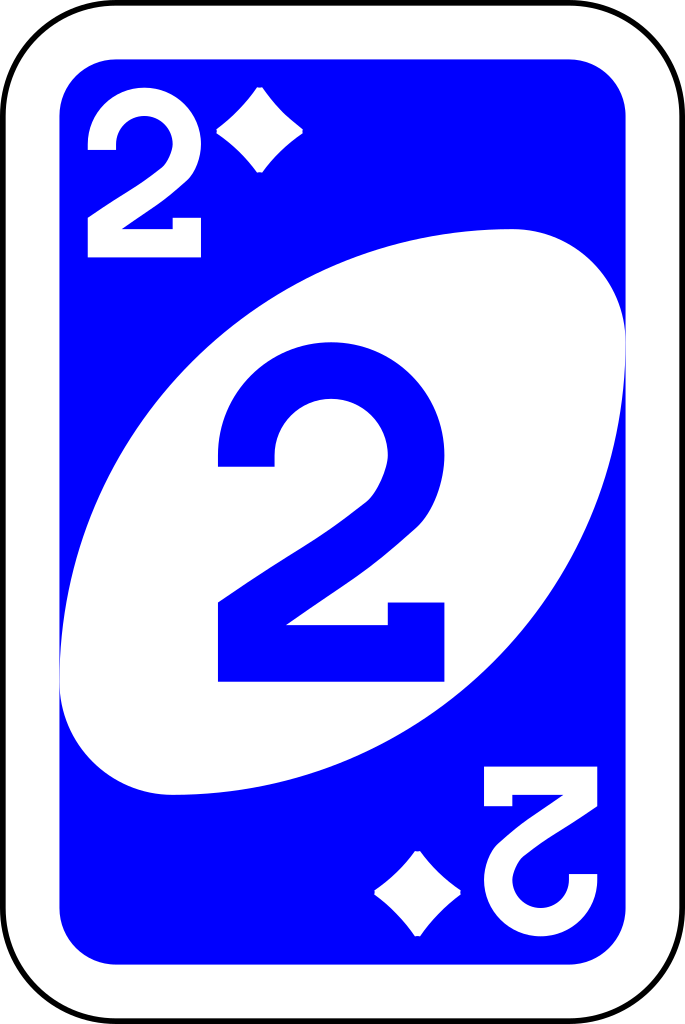
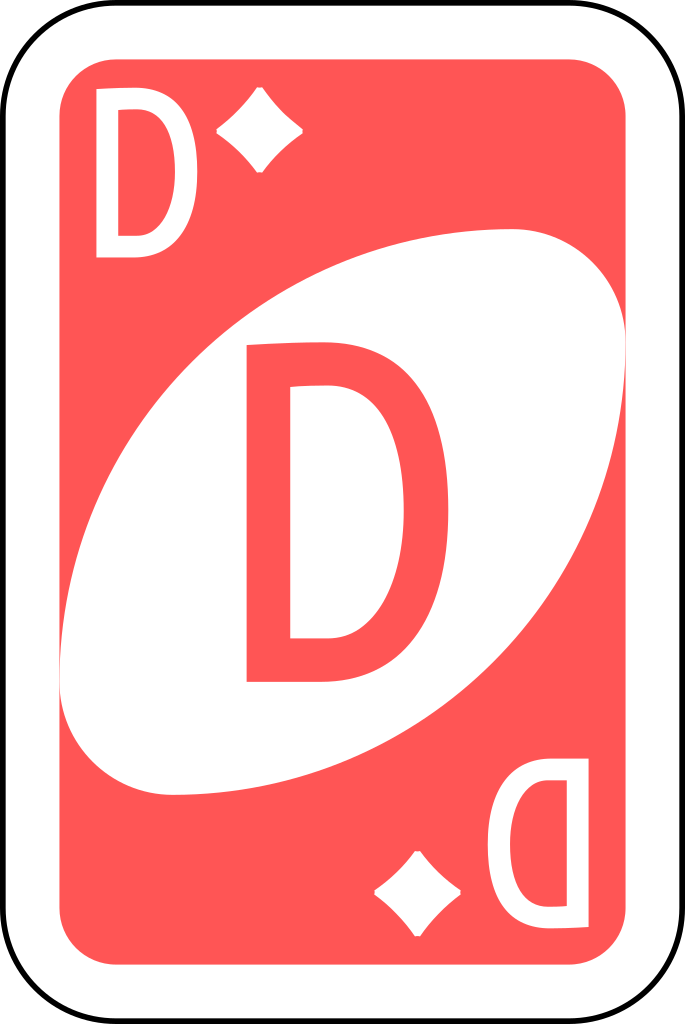
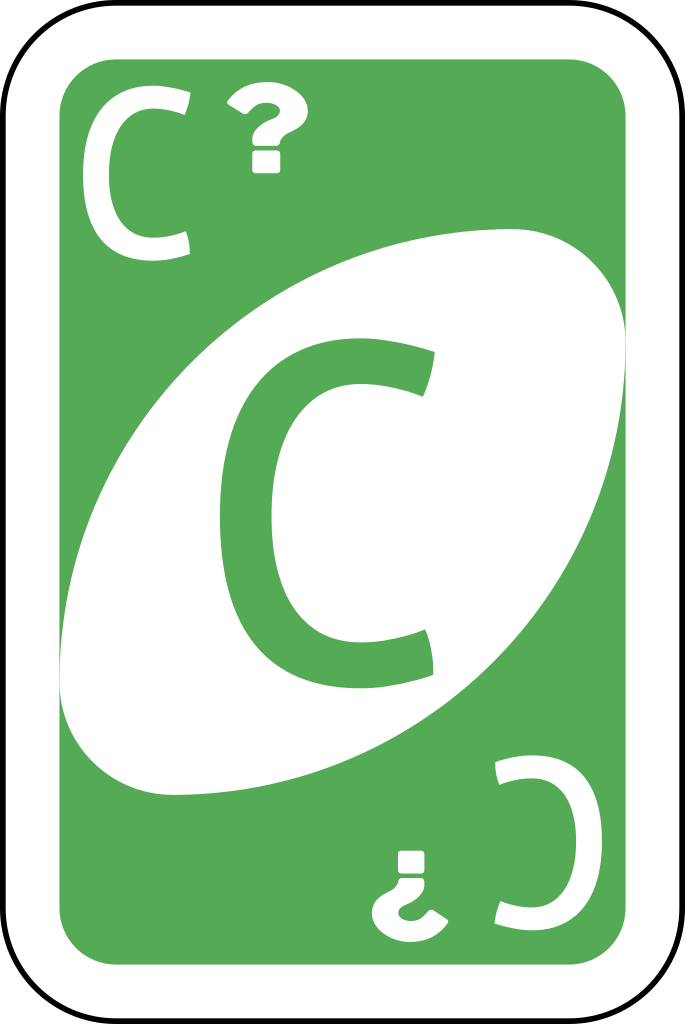
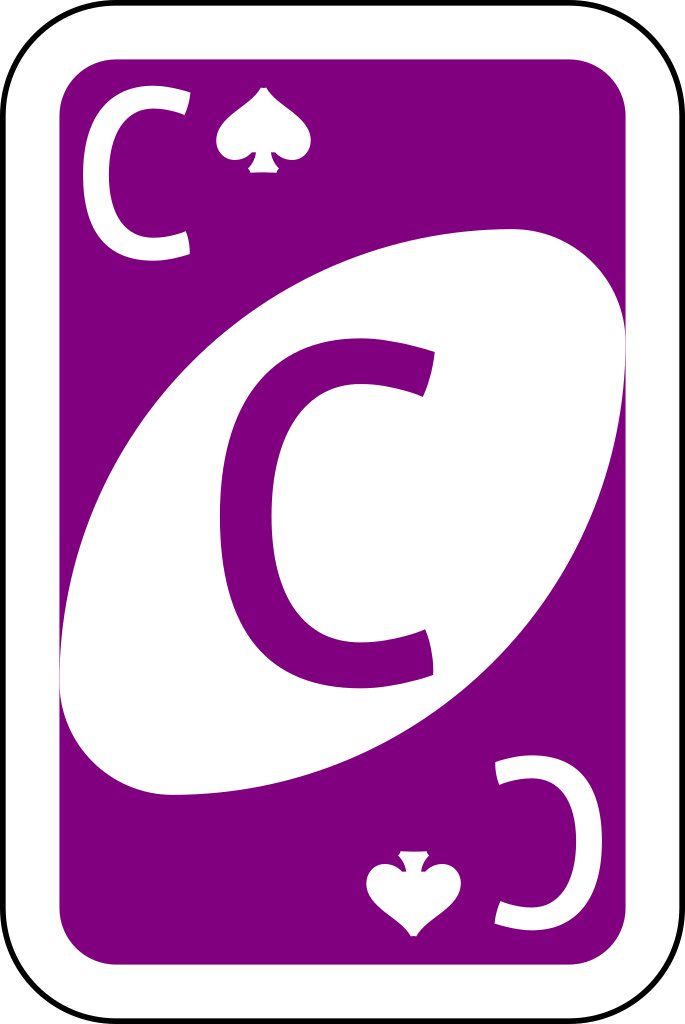

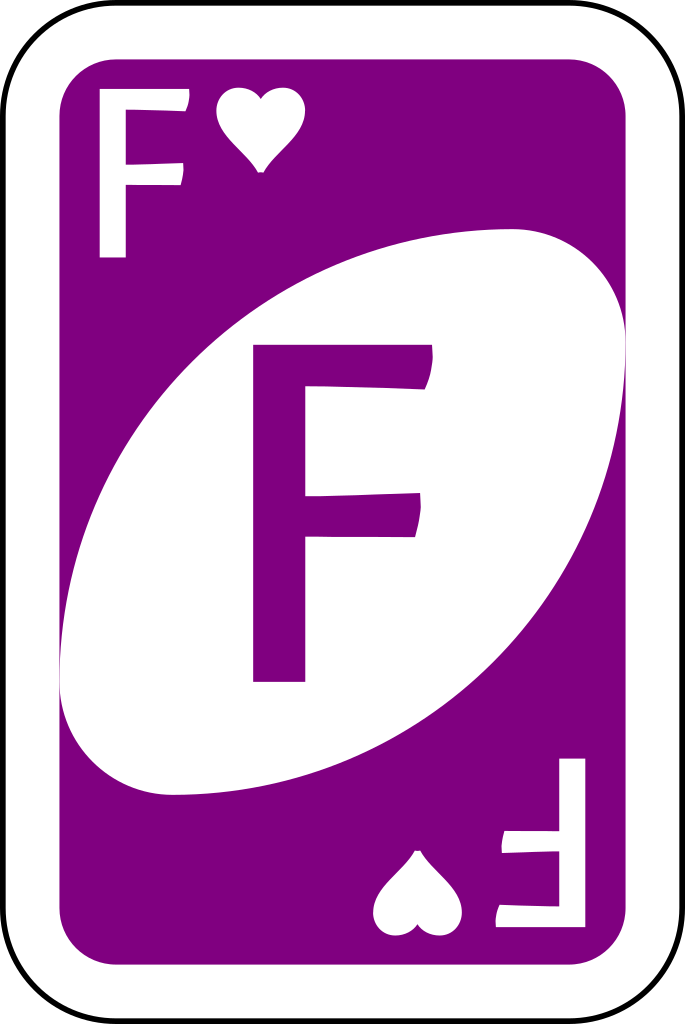
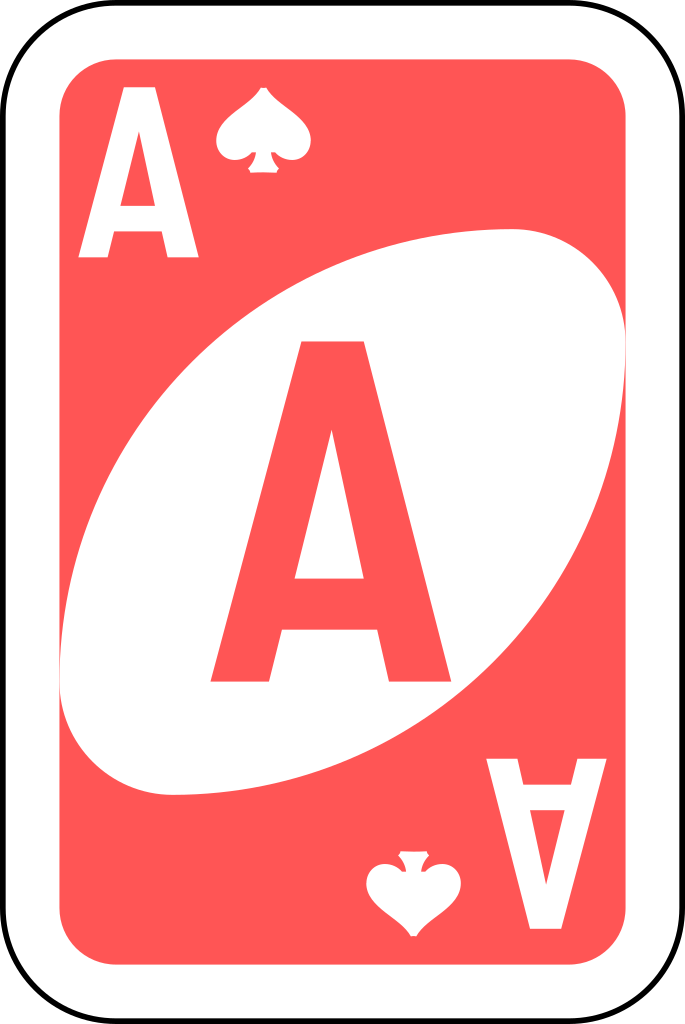
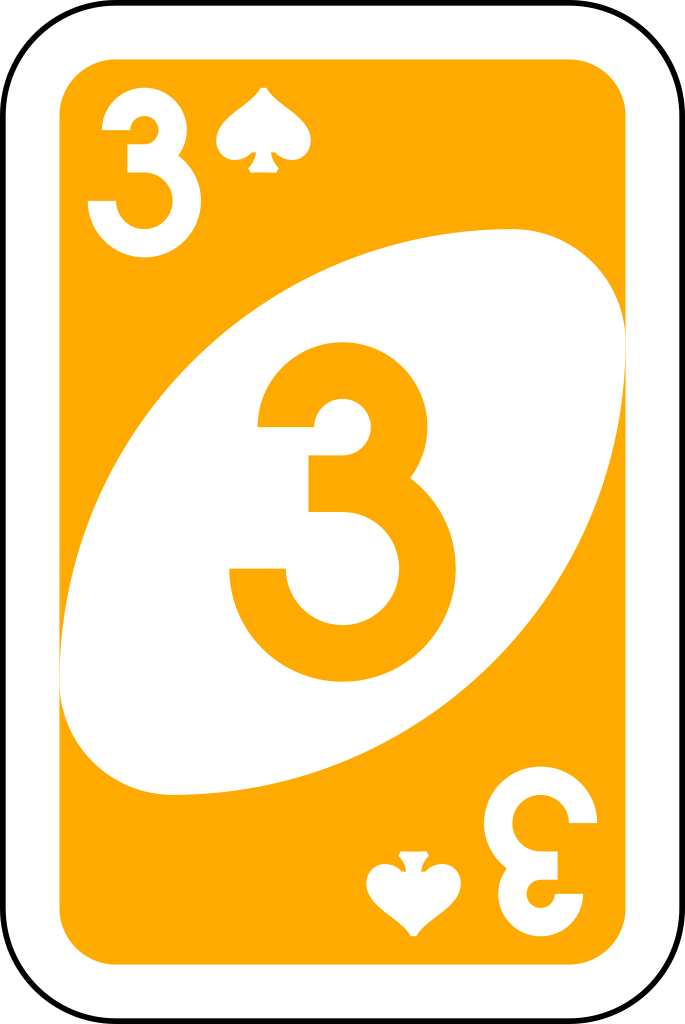
The Start of Play
At the start of the game, the deck is shuffled.
From the deck, each player is dealt 7 cards.
The first card goes to the first player,
the second to the second player,
the third to the third player,
the fourth to the fourth player,
the fifth to the first player,
and so on, until each player has 7 cards.
These 7 cards form the players hand.
The top card on the deck is then removed and placed facing up,
starting the discard pile.
The rest of the deck becomes the draw pile.
Playing the Game
Each player takes a turn.
- During a turn a player may make one of the following actions:
- Play a card (and discharge it on the top of the discard pile):
- with the same value, suit or color (adjusted for a case
where the last player played "D" and might have changed color, see below)
- with a value of NULL (value of 0).
- Draw a card from the draw pile.
- End turn.
- If the value of the Play card is
- 2, the next player must either draw two cards from the deck
into their hand or play another card with a value of 2.
If they play a 2, they draw no cards and
the player after them must draw 4 cards.
Cards with a value of 2 may be stacked on each other
increasing the number of cards to be drawn by 2
until a player can not place down a 2 card.
- A, the next player’s turn is skipped,
- D, the player may declare the color that the next card played
must have (instead of the color of the card they played).
- If the value of a card played by the player in the previous turn is not "2",
the (current) player needs to either play a card (that satisfies the game rules) OR
drawn a card, followed by end of the turn.
If the value of a card played by the player in the previous turn is equal to "2",
the (current) player can play another card with a value of "2" OR needs to
draw two or more cards depending on the number of consecutive cards with value "2"
at the top of the discard pile.
The function "getNumberOfTwoCardsAtTop" (in Game.h) returns
number of consecutive cards with value "2"
at the top of the discard pile.
For example, if there are two consecutive cards with value "2"
at the top of the discard pile, the player needs to either play another card
with value "2"
OR draw four cards, followed by end of the turn.
Read the above rule for more detail.
- If there are no cards remaining in the draw pile,
then the current discard pile is collected and inverted
to become the draw pile.
The discard pile does not need to be shuffled
when turning it into the draw pile.
The first card that was played into the discard pile
will become the first card to be drawn from the draw pile.
-
If the first card in the discard pile at the start of the game is a special card,
the card will have the effect that it usually had:
- If the initial discard pile card has value 2, the first
player must draw two cards (or play a card with value "2" from his/her hand).
- If the initial discard pile card is A, the first player is skipped
and it becomes the second player's turn.
- If the initial discard pile card is D, nothing special happens,
the card is treated like any other card (you can match on suit, color, or value).
You must carefully read comments in the header file (API)
Game.h,
in particular for the function isValidMove.
Winning the Game and Scoring
A player’s score at any point in the game is the sum of the cards in
their hand.
The game ends when a player places their final card down
onto the discard pile, leaving them with an empty hand.
This means that as soon as the player places their card down,
the game ends. The player does not need to declare the end of their turn
for the game to end.
The Cards
There are 800 cards in the traditional deck for Final Card-Down. Each card has a suit, color, and a value and there are two of each kind of card.
There are 16 values that a card can have, one for each value from 0 to F in hexadecimal; 0 may also be referred to as NULL. There are five suits; hearts, diamonds, clubs, spades, and questions. There are five colors; red, blue, green, yellow, and purple.








The Start of Play
At the start of the game, the deck is shuffled. From the deck, each player is dealt 7 cards. The first card goes to the first player, the second to the second player, the third to the third player, the fourth to the fourth player, the fifth to the first player, and so on, until each player has 7 cards. These 7 cards form the players hand. The top card on the deck is then removed and placed facing up, starting the discard pile. The rest of the deck becomes the draw pile.
Playing the Game
Each player takes a turn.
- During a turn a player may make one of the following actions:
- Play a card (and discharge it on the top of the discard pile):
- with the same value, suit or color (adjusted for a case where the last player played "D" and might have changed color, see below)
- with a value of NULL (value of 0).
- Draw a card from the draw pile.
- End turn.
- Play a card (and discharge it on the top of the discard pile):
- If the value of the Play card is
- 2, the next player must either draw two cards from the deck into their hand or play another card with a value of 2. If they play a 2, they draw no cards and the player after them must draw 4 cards. Cards with a value of 2 may be stacked on each other increasing the number of cards to be drawn by 2 until a player can not place down a 2 card.
- A, the next player’s turn is skipped,
- D, the player may declare the color that the next card played must have (instead of the color of the card they played).
- If the value of a card played by the player in the previous turn is not "2",
the (current) player needs to either play a card (that satisfies the game rules) OR
drawn a card, followed by end of the turn.
If the value of a card played by the player in the previous turn is equal to "2",
the (current) player can play another card with a value of "2" OR needs to
draw two or more cards depending on the number of consecutive cards with value "2"
at the top of the discard pile.
The function "getNumberOfTwoCardsAtTop" (in Game.h) returns
number of consecutive cards with value "2"
at the top of the discard pile.
For example, if there are two consecutive cards with value "2"
at the top of the discard pile, the player needs to either play another card
with value "2"
OR draw four cards, followed by end of the turn.
Read the above rule for more detail.
- If there are no cards remaining in the draw pile,
then the current discard pile is collected and inverted
to become the draw pile.
The discard pile does not need to be shuffled
when turning it into the draw pile.
The first card that was played into the discard pile
will become the first card to be drawn from the draw pile.
-
If the first card in the discard pile at the start of the game is a special card,
the card will have the effect that it usually had:
- If the initial discard pile card has value 2, the first player must draw two cards (or play a card with value "2" from his/her hand).
- If the initial discard pile card is A, the first player is skipped and it becomes the second player's turn.
- If the initial discard pile card is D, nothing special happens, the card is treated like any other card (you can match on suit, color, or value).
You must carefully read comments in the header file (API) Game.h, in particular for the function isValidMove.
Winning the Game and Scoring
A player’s score at any point in the game is the sum of the cards in their hand.
The game ends when a player places their final card down onto the discard pile, leaving them with an empty hand.
This means that as soon as the player places their card down, the game ends. The player does not need to declare the end of their turn for the game to end.